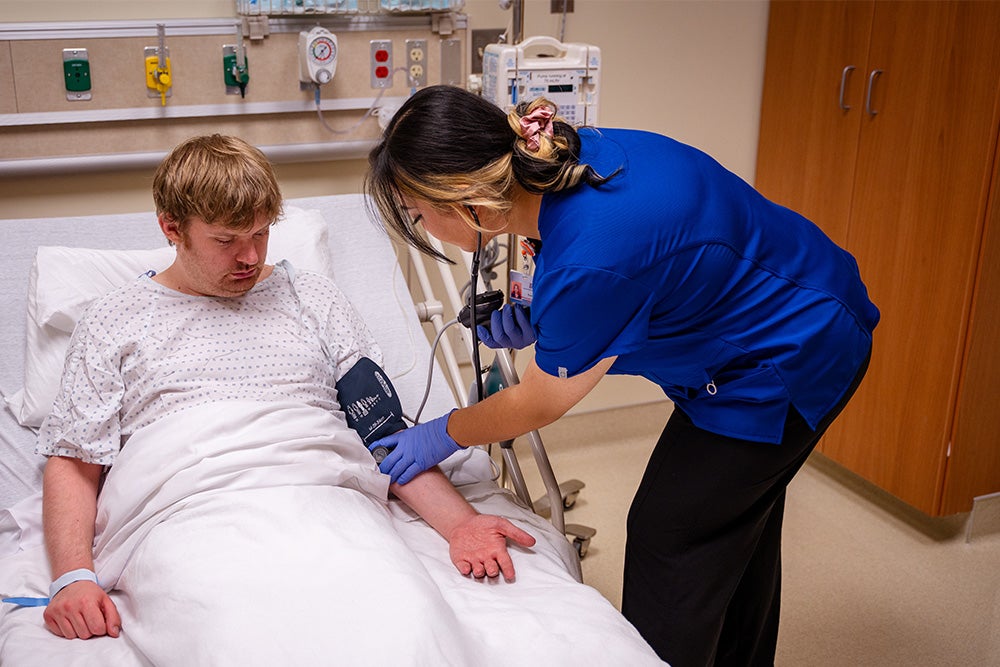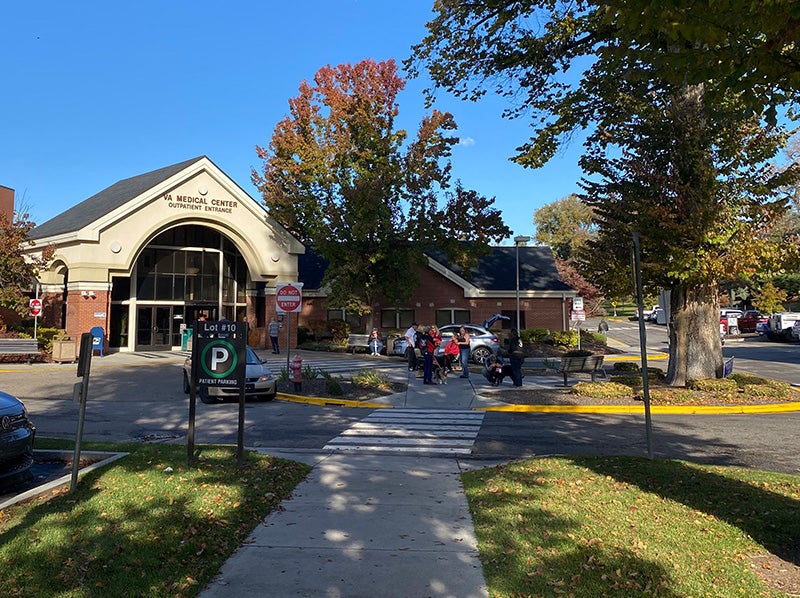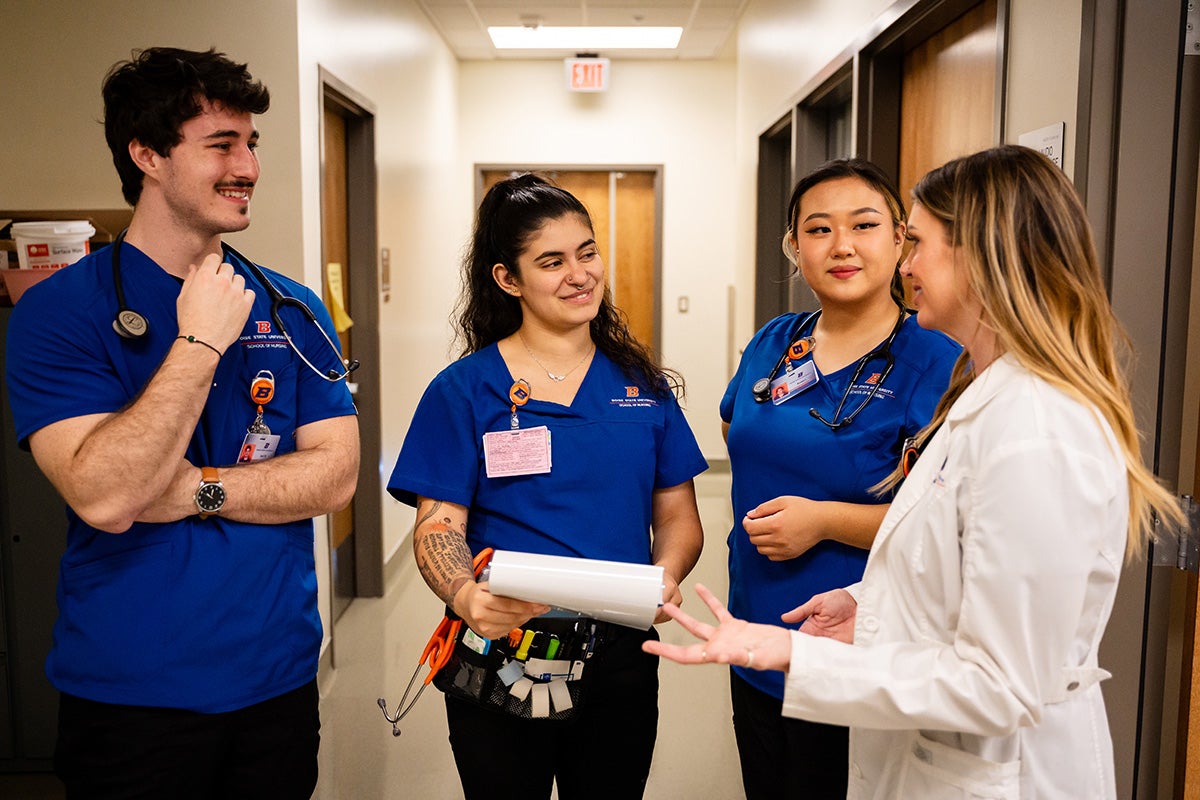Clinical rotations are an essential part of Boise State’s nursing education. Although it’s difficult to measure the success of these experiential learning opportunities, unique placements and invested instructors play a crucial role. And at the Boise VA Medical Center, so do the patients.

Like all Veterans Affairs hospitals, the Boise VA Medical Center is a teaching facility. Patients are given the opportunity to opt out of students being present during their care, “but by and large, I think we’d be hard pressed to find someone that didn’t want a student in there learning,” said Andrea Tamura, a clinical education specialist at the Boise VA Medical Center. “They’re very used to student training happening at our facility, which is great.”
Junior nursing student Amber Belmonte completed a clinical rotation at the VA last spring. She was surprised how receptive the veterans were to having students to practice on them.
“Not one veteran I worked with even hesitated to let me do my job,” she said. “If they needed an IV, they would say, ‘Great, go at it.’ If I needed to do an assessment of their lungs or heart, they would crack jokes about what I could hear. They take life with a grain of salt, and I love that.”
Exceptional environments
The VA patient population is unique from other medical centers because their patients deal with many issues – such as trauma, homelessness or food insecurity – at a higher rate than the general population. Because of that, students learn to care for veterans in a holistic manner.
“It’s not just the health care issue that they’re dealing with; it is the whole patient, whether it’s a mental or social or physical issue, everything is addressed,” Tamura said. “For a student to be part of that and see that whole big picture of care is really, really beneficial.”

And although students are there focusing on nursing, the VA gives them a taste of the interdisciplinary workplace early on.
“Everybody on the team gets to have a say, everybody has something important to offer in the care of that patient,” Tamura said. And that means students, too. “If they have something to offer, we encourage them to speak up because it’s valuable,” she said.
The result of this supportive environment?
“The feedback that I’m getting from students is that they feel welcome here,” Tamura said. “They feel like they’re part of the team.”
Belmonte confirmed: one of the best parts of her experience was working with staff who “really enjoyed teaching,” she said.
“During my very first clinical in the VA, I had been placed in the [cardiac catheterization] lab. In the eight hours of being there, and only having three procedures scheduled for the day, the staff took that free time to teach me anything that might be useful. They could have easily taken that time to take breaks or work on their own tasks, but they used it to teach me something new,” Belmonte said.
Innovating to expand opportunities
Tamura acknowledges that the size of the facility does limit the number of students they can accept at a given time. “We’ve had to get creative about how to accommodate the larger number of student cohorts without burning out staff,” she said.
Luckily, the VA embraced Boise State’s drive to innovate and worked with the School of Nursing team to implement options that suit both students and staff nurses.

For students in medical-surgical classes, they now have opportunities to rotate through less-traditional clinics in the VA that still have a “med-surg” focus: the wound clinic, oncology/infusion, endoscopy and the cardiac catheterization lab.
This spreads out the workload across the entire facility and widens students’ perspectives through a variety of environments.
“It’s really great to provide these opportunities for nursing students and let them know that your options are not just med-surg, [intensive care unit], or the emergency room. It runs the gamut, as far as where you can work and where nurses are needed.”
The VA also implemented a split rotation model that has become increasingly popular with Boise State clinical partners. This allows facilities to utilize night shift nurses during the end of one student rotation, which Tamura said is working “really, really well” for staff.
“They’re really enjoying the opportunity to have a part in these clinical rotations and students’ education,” Tamura said.
At the VA, ‘The sky’s the limit’
Tamura is grateful for the partnership between the Boise VA Medical Center and Boise State, hoping to expand their clinical offerings even further as curriculum and community needs adapt.
“We have a lot to offer in a lot of different varieties of mental health,” Tamura said. “So it’s in the works.”
She also hopes students will recognize the opportunities afforded by the VA and consider them for future employment because “as cliche as it sounds, truly, the sky’s the limit,” she said.
“I absolutely could see myself returning to the VA in the future,” Belmonte said.
“The most rewarding part of working at the VA was being able to work with the veterans themselves. I love doing what I can to help them feel better, but nothing is better than getting to talk to them and hear stories of their life…honestly, they have the best life lessons and are a constant reminder to never take time for granted.”Amber Belmonte
“From the bottom of my heart, I appreciate the opportunity I got to complete my clinical rotation at the VA. I learned so much valuable information, not only from the staff but from the veterans,” Belmonte said.